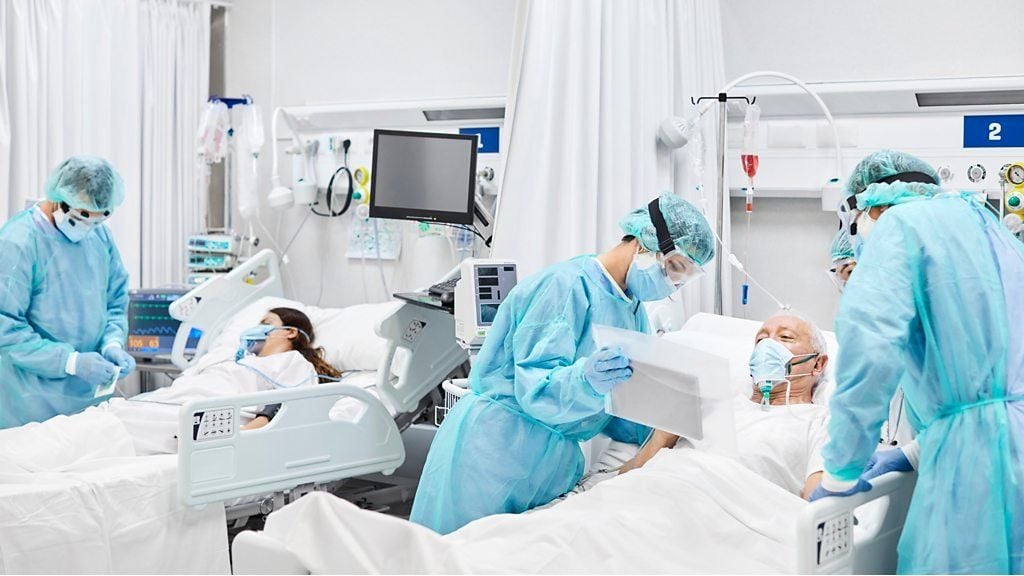Flexible space? Shared space? No space? Mobile video capture solves challenges in clinical and simulation environments.
Let’s start with when and why you should consider a mobile recording solution.
An obvious barrier to an audio/visual system installation is lack of permanent space. If you don’t have dedicated rooms in which to install cameras and microphones, portable devices are literally the best fit.
Another challenge is shared space. If you share space with another program or department that relies on video for live observation and recording, you may have different video capture needs than your space sharing counterpart. Or they may not want audio/video equipment installed in your shared space. A mobile option allows each of you to add or remove cameras as needed to accommodate activity specific to each of your learning objectives.
A third obstacle is flexible space. When one room must replicate multiple environments, use mobile recording devices to adapt video capture to the room’s purpose of the day (or the hour!). Even with an in-room audio/video installation, mobile cameras supplement the installation to accommodate a variety of learning or research objectives. For example, if an exam room has a camera at the patient headwall, and a ceiling mounted camera for overall room capture, but it needs to double as labor and delivery for a scenario, add an additional mobile camera to capture activity around the infant warmer. Look for a solution that groups the mobile camera(s) with the installed cameras for synchronized observation and recording of video.
Portable recording solutions don’t just overcome challenges with room space, they also help overcome budgetary constraints. For instance, if a second camera in each room of your clinic is not in the budget, but a second camera helps accurately observe and assess sessions, use a portable camera when two views are needed. Or if you cannot afford a permanent audio/video system, then an out-of-the-box portable recording option may be an affordable alternative. Demand for mobile recording solutions continues to bring to market options that offer perfectly synchronized HD video and audio, so portability no longer means sacrificing quality.
How do you know what type of portable recording device will work best? Consider what type of activity you’re trying to capture, where the activity will take place, and how much time you have available to set up and position a streaming and recording device before a session begins.
Below are five use cases we’re excited about in which portable recording devices empower educators to live stream and record in nonpermanent and transient spaces.
- Traveling Educator
If you or your team travel to disparate site locations to train healthcare professionals, mobile recording devices allow you to use recordings to improve learning outcomes even without a dedicated training space. Look for a mobile solution that includes an ergonomic carrying case or backpack to transport cameras an audio equipment with you on the road. Cameras may be unpacked and positioned before the start of each training session to accommodate the training space and type of training at each facility you visit.
- In-Situ Training
A portable recording system can be used throughout a healthcare facility to record in-situ training performed by different departments. No permanent space is required, and audio/video equipment does not need to be installed in a patient care unit. For example, a camera and microphone mounted to a wheeled cart is easily transported throughout a facility. Group multiple mobile recording carts together to capture multiple camera angles and position the carts specific to each department’s in-situ training scenario(s).
- Clinical Rotations
There’s no substitute for real-world experience. When student-clinicians go off-site for clinical rotations, a portable or mobile video recording solution supports continued supervision and feedback. For example, in a school-based clinical rotation, your students could take a video recording app on an iPad or tablet with them to the school, set it up on a table and record their session for feedback from their supervisor.
- In-Transit Simulation
When a simulation requires participants to travel between rooms (or even floors) as part of their scenario, mobile video capture devices allow you to continue to live stream and record activity in transit. For example, if participants start in a simulated home environment and then move the standardized patient down the hallway to a simulated ambulance. A wireless camera or tablet on wheels, or a tablet mounted to a small tripod or gurney can live stream and record activity from one space to the other.
- Medical Residency
Like clinical rotations, medical residency programs benefit from mobile recording options that allow a resident supervisor to stream video and observe the resident remotely to create a more realistic experience or review recorded video of resident interactions for feedback. Staying on schedule with patients is hard enough without having to use valuable time to setup and takedown audio/video equipment, so look for a cart-mounted camera and microphone that rolls in and out of a room and requires no time for a resident to set up. Cameras on carts also have the added benefit of not using valuable surface area.
Portable video solutions help you stream, record, and review video for training and education, anywhere. If you think mobile video capture may be a good fit for your space and you’re ready to explore options, start here.






